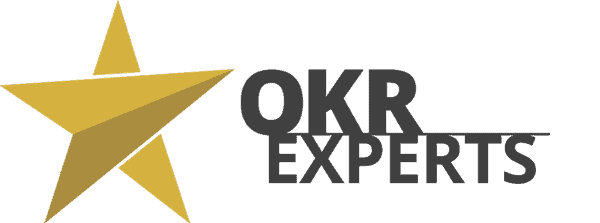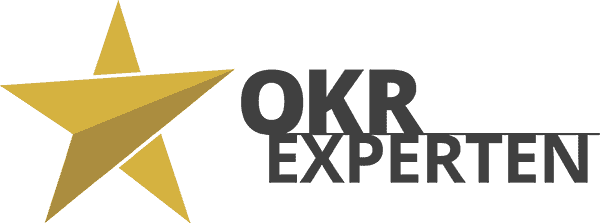
10 Sep OKR’s HR department – Top 4 opportunities
Top 4 ways in which HR departments can use OKRs
How can HR departments use OKRs effectively? In the new normal of 2020, every successful organization can be seen as a tight network of independent teams: They are often geographically dispersed, yet operate with a high degree of collaboration, accountability and transparency. Now more than ever, HR needs to actively play an integrating role across these distributed teams and systems. This is the only way to ensure cohesion between everyone.
The HR department has a central function in the company, recruiting and maintaining the organization’s most valuable resource – its employees. However, only a few companies actively integrate them into their strategy.
Typically, the HR department’s goal is to ensure business continuity, efficiency and employee engagement – even while working remotely. At the same time, HR goals should also be challenging goals that inspire and motivate. For example, if your company is having problems with the current onboarding of new employees, we could help with the
objective
“Create a world-class employee onboarding program“.
The associated key results could look like this:
- Improve employee satisfaction after onboarding to 95%.
- Ensure 90% readiness of employees within 4 weeks.
- Recording of 100% of new employees with mentors.
The HR department can therefore use OKRs – Objectives and Key Results – to successfully implement the above-mentioned objective and other similar objectives.
4 Advantages for HR departments through the use of OKRs:
Reducing the discrepancy between strategy and implementation through CFR
To keep the different departments focused and aligned and to meet customer requirements, HR can have an OKR with the aim of focusing on ‘results‘ rather than ‘output ‘.
Once results-oriented goals are set, the OKR framework promotes Conversations, Feedback and Rewards (CFR). Continuous discussions and feedback take place throughout the quarter. Rewards and recognition are also given throughout the quarter – instead of waiting for the end of the year as usual. As a result, there are no nasty surprises at the end of the year and problems such as recency effects are reduced. This is because continuous feedback is already recorded in the OKR tool.
This ensures that both employees and line managers are aware of everyone’s contribution to the company’s goals. This allows the HR department to reduce the usual stress in the feedback process.
Creating a structured log of progress through PPP
The Progress, Plans and Problems (PPP) framework is an effective method of status management . It records the progress made in the past period (what was done), the plans (what will be done) for the next period and the problems (what are the obstacles) encountered by the teams and employees. PPPs and OKRs help your individual team members to set better personal goals, stay focused and set realistic targets. By recording all of this in writing, the teams also avoid misunderstandings. This makes the reporting process simple and clear for everyone to understand.
HR managers can also refer to the PPP documents at any time. This enables them to assess progress and at the same time offer help to anyone who is having difficulties.
Actionable feedback through Reflect/Reset
Although check-ins by employees are more common than those by line managers, quarterly reflect/resets enable a holistic review of your HR team and individual OKRs. Reflect/Reset allows you to reflect on (or celebrate!) what you have achieved in the current quarter. Or, on the other hand, to gain new insights that they can implement in the next quarter.
With the insights from Reflect/Reset, HR leaders can use a growth mindset to empower all team members to change and develop. In this way, all team members are emotionally involved in the department’s goals.
Promoting continuous learning through the PEEL approach
The Plan, Execute, Engage and Learn (PEEL) approach provides an overview of the OKR cycle and can be particularly helpful for HR departments. PEEL consists of 4 steps:
-
Plan your OKRs.
-
Execute your OKRs.
-
Involve your employees.
-
Learn from successes and failures.
During the planning phase, managers determine which goals are challenging yet achievable for their department so that they can build departmental OKRs around the organization’s OKRs. This process involves a lot of internal discussions with the team.
During the execution phase, managers begin to learn about the progress that is being made. Here, the OKRs of the departments can be divided into tasks either by managers or by individuals.
The third part of the cycle focuses on actively involving employees in the process. There is a lot of exchange within the department – between managers, colleagues and employees – through a system that is also based on OKRs.
The final phase focuses on learning and reflecting on the experience gained in the last period. This gives us the opportunity to reflect on what we have already learned and where we want to go next. It is therefore important to learn what worked during the quarter and what did not.
Summary
This process of creating and executing OKRs is not a one-off process. Rather, OKRs are a cycle that requires commitment and practice. This is the only way you can really learn from experience in the long term. Employee engagement scores improve, customers and partners notice their win rates, CSAT scores increase.
In the long term, all of this leads to a profound change in corporate culture. Towards self-directed employees, each willing to strive for ambitious goals, building empowered teams that celebrate team achievements together. It allows your organization to grow, achieve your goals and increase in value.
In many fast-growing technology companies, a new model for the role of Chief HR Officer (CHRO) is emerging to reduce the gap between strategy and execution.
We hope this article has given you an insight into the questions you can ask OKRs in your HR department. You can find many more articles on the subject of OKR in our OKR expert magazine.
Are you planning to introduce OKRs in your company? We will be happy to advise you!





